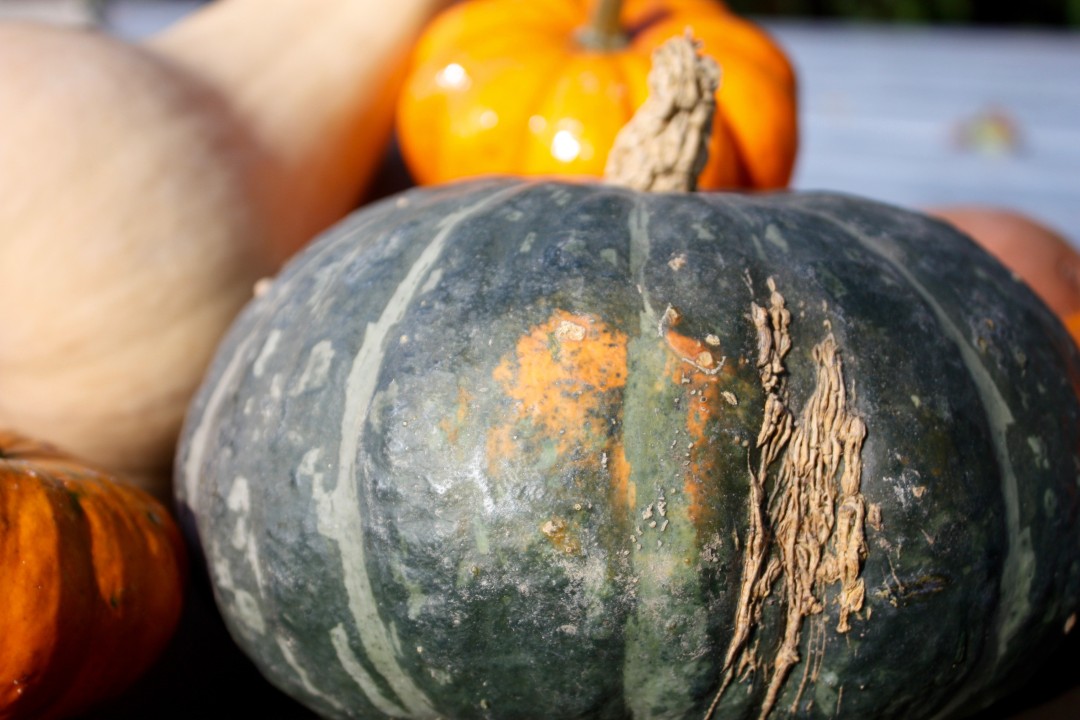It’s November and days are colder and shorter. Here are 3 vegetables in season that will boost your energy and add flavour and perfume in your dish.
You know it and heard it often: to be healthy and reduce illness it is important to eat your fruits and vegetables. The experts are unanimous: eating 5 fruits and vegetables per day is part of a healthy and balanced diet lifestyle and may reduce certain illnesses. Probably easier said than done? Meet again these 3 great food stars which are in season…
Three vegetables that will give you energy in November
1 – Brussels sprouts. Member of the family of cruciferous, brussels sprouts are considered to be the most active sprouts. Cabbages are packed with cancer-fighting substances and some studies consider using them as medicine. All cabbages contain flavonoids that protect the body, vitamins, fiber and minerals. Their effects are beneficial against digestive cancers and cardiovascular health. If you suffer from constipation, cabbage will stimulate your gut health. And if you are diabetic you will benefit from the cabbage family, because they contain few carbohydrates but many vitamins and minerals.
How to buy. It is easy to choose them well. Make sure that the color of the leaves are dark green. Avoid Brussels sprouts that lack firmness or which are yellowish.
How to keep. When you are back from the market, leave them as is and put them in the bottom of the fridge. Don’t let the cabbages lying around at room temperature and eat them in the following days.
How to cook. To enjoy the benefits of cabbage, it is recommended to eat them cooked or raw and the Brussels Sprout are no exception. As for any other vegetables, steaming them is one of the best ways to eat them because they preserve most of their benefits.
2 – Leeks. The humble leek is rich in vitamins A, B9, C (especially in the green part), minerals and fiber. Diuretic and purifying, it has beneficial effects on the bad cholesterol. Like garlic and onion, it helps to fight against certain cancers.
How to buy. Unless they are organic, don’ buy leeks if their green part has been cut off, because it will be difficult to assess their freshness. Avoid those that have softened or have faded ends (the green part). The green of the leek must be firm and very dark green color and as for the white part… well it must be very white.
How to keep – When you are back from the market, if need be cut 1/3 of the top (the green part) and put them in the bottom of the fridge. Eat them in the following days, otherwise they will lose their benefits. On the other hand, leeks freeze very well. Simply wash them, dry them and then freeze them.
Tip – Wash, dry, freeze the green part of the leeks and add them in your soups or broths.
How to cook – leeks can be boiled, steamed or baked. In soups, they go well with the fresh thyme, rosemary, oregano, garlic, celery, potato, parsnip and pumpkin.
3 – Squash. Symbol of fall, squashes are delicious and are very good for your health. Whether you buy pumpkins, butternut squash, or spaghetti squash, they will all provide you with vitamins A, B2, and C and they are rich in beta carotene and beneficial for your eye sight. In addition they are beneficial to the immune system and they are considered foods that delay aging!
Ho to keep. When you are back from the market, store them in a cool place away from heat or freezing. They can be stored for several weeks.
How to cook. They are easy to cook. Roasted, boiled in soup, mashed or baked, you can let your imagination run.
Practical advice
Summer or winter, when you’re at the grocery store and facing the food stalls full of fruits and vegetables, remember 2 important principles: the season and the source of the product.
When you put in your plate fruits and vegetables that are in season, you will be providing the vitamins and minerals which your body needs during that season. For example, cucumbers and zucchinis that we eat in summer are full of water and they serve to quench thirst and lower our body temperature. Refreshing, you will say. On the contrary, winter food such as squash, cabbage, carrots and potatoes, will be help strengthen and warm the body because of their high calorie content.
As for their source, the more fruits and vegetables come from distant countries, the more they lose their nutrients. Therefore choose as much as possible seasonal products who have not come from the other end of the world. And if in our cold countries, it is difficult to find fresh strawberries in January, you can easily go for frozen vegetables and fruits. They will be fresher than products which have travelled from the other end of the planet to arrive 10 days later in your plate!
In November (and December)
Here are other fruits and vegetables featured in November in Quebec:
Carrot, celery, endive, spinach, fennel, Mâche lettuce, onion, parsnip, potato and Jerusalem artichoke.
Pineapple, avocado, lemon, clementine, dattes, kiwi, Tangerine, mango, chestnut, walnut, orange, papaya, pear and Apple.
♣♣♣
Thought of the day: «We remember the fish we ate in Egypt at no cost—also the cucumbers, melons, leeks, onions and garlic the Bible – Numbers 11:5.
Yes, believe it or not, once upon a time, there were people who missed eating leeks and onions!
♣♣♣
- 1 butternut squash (about 1 kg), peeled and cut into cubes
- Olive oil
- 1 Tbsp herbes de Provence
- Salt and pepper
- 1 C quinoa, cooked
- ½ red onion, sliced thin
- ½ C dried cranberries
- ½ C pumpkin seeds
- 1 handful of spinach leaves
- Feta cheese to taste
- 1 orange
- 1 lemon
- 5 Tbsp pumpkin oil (or hemp or olive oil)
- 4 Tbsp olive oil
- Salt and Pepper
- Preheat the oven to 400F.
- Line a baking sheet with parchment paper. Put squash cubes on baking sheet add oil, herbes de provence, salt and pepper and mix well. Arrange cubes in one layer. Roast for 25 minutes or until squash is tender and lightly browned. You can roast the squash and set aside until ready to mix for the salad.
- For the dressing, squeeze lemon and orange juice. Pour into a bowl. Whisk in slowly the pumpkin and olive oils. Add salt and pepper.
- To assemble, In a large bowl, mix quinoa, roasted squash, cranberries, spinach, sliced onion. Sprinkle with feta. Add the dressing, mix and adjust seasoning to your taste.













